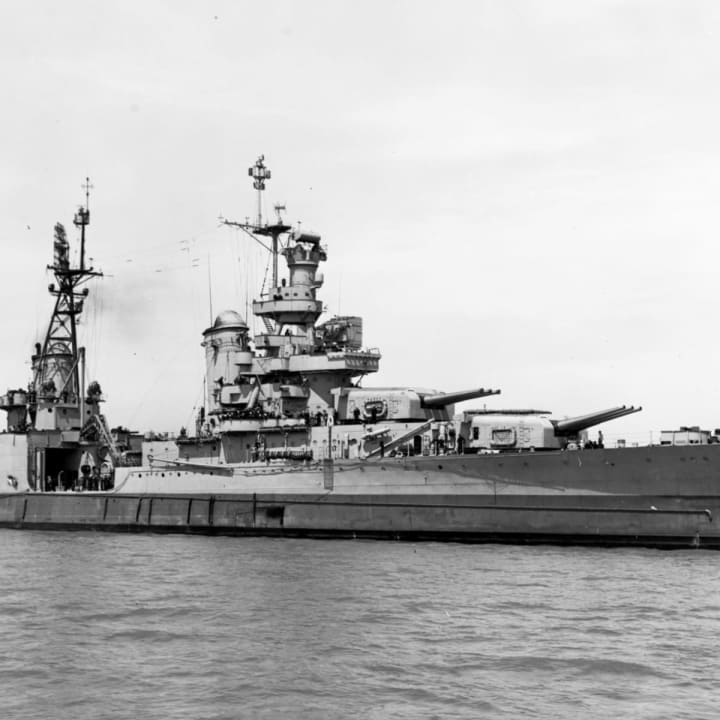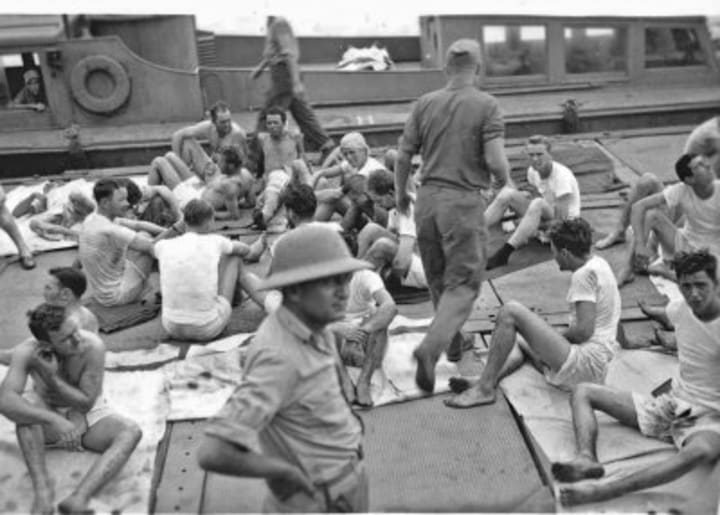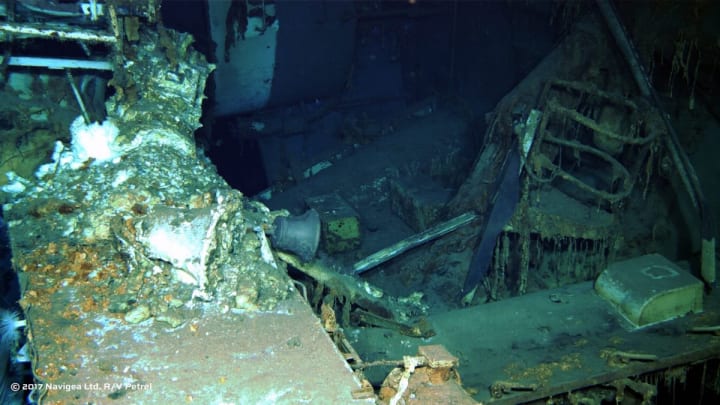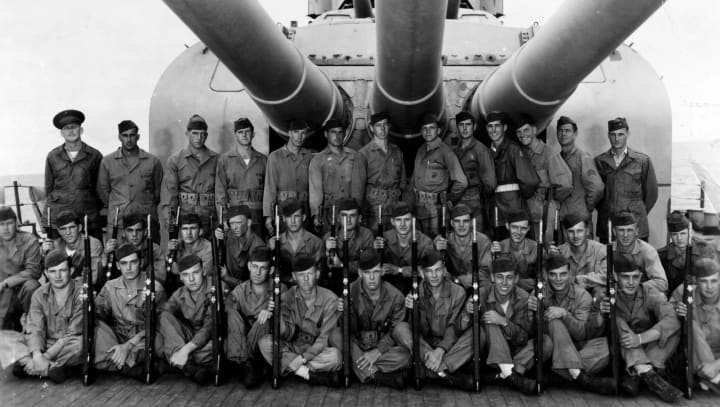How The Sinking of The USS Indianapolis Became The Worst Shark Attack in History
The tragic sinking of the USS Indianapolis

The heavy cruiser USS Indianapolis was part of the U.S. Navy. It was named after the city of Indianapolis, Indiana. It was launched in 1931.
At 00:15 on July 30, 1945, the USS Indianapolis was sunk by a Japanese submarine after delivering parts of the atomic bomb that would be dropped on Hiroshima. The ship sank in 12 minutes. About 300 of the ship's 1,195 crew members went down with it. The other 890 people were stuck in the open ocean with few lifeboats and almost no food or water. The Navy didn't find out for four days that the ship had sunk.
Into The Pacific Theatre
The USS Indianapolis, measuring 610 feet and three inches in length and displacing 9,950 tons of water when placed in the harbor, was launched in 1931 and commissioned by the Navy the following year.
The United States joined World War II when Japanese planes bombed Pearl Harbor on December 7, 1941.

In February 1942, about 350 miles south of Rabaul, New Britain, the Indianapolis fought for the first time. She and other American ships shot down 16 of the 18 twin-engine Japanese bombers. During most of 1943, the ship mostly followed and defended American convoys against amphibious attacks. During the war, she was in many places: New Guinea, Saipan, the Battle of the Philippine Sea in 1944, and even the attacks on Tokyo the next year.
The USS Indianapolis was used to send parts and nuclear material for the "Little Boy" atomic bomb, which was going to be dropped on Hiroshima. The mission was kept a secret, and most of the crew didn't even know what they were carrying.
The Attack On USS Indianapolis
From July 16, 1945, to July 26, 1945, the ship raced 5,000 miles from San Francisco to the island of Tinian. Three days later, she blew up on the way to the island of Leyte in the Philippines, sending 1,195 men into waters full of sharks.
By this time in the war, the Japanese were under a lot of pressure, and the American forces at sea thought they were close to winning.
Still, early in the morning of July 30, 1945, the Japanese submarine I-58 fired six torpedoes at the ship, which didn't know what was coming. Two of the torpedos hit the target.

The first bomb torpedo hit the Indianapolis on the right side of her back. The second one hit in the middle and set the fuel tank on fire. Immediately, 300 sailors became trapped in the destroyed ship. Others were only able to grab a few rafts before they jumped overboard. The rest were kept afloat by their life jackets.
Nine hundred men who had survived the first attack were left in the middle of the Philippine Sea to wait for help. But three different Naval commanders didn't pay attention to the ship's three distress signals. One thought it was a trap set by the Japanese, another asked not to be bothered, and the third was drunk.

Also, the ship wasn't reported missing when it didn't arrive in Leyte as planned the next day. The Navy later said that the mission's secrecy was to blame for communication problems.
The sailors began to drink salt water out of desperation. They prayed for darkness, because the lack of sunlight left them all nearly frozen.
Throughout, sharks circled the men and randomly attacked defenseless sailors.

Throughout, sharks circled the men and randomly attacked defenseless sailors. As many as 150 men are said to have been killed by sharks.
It would take nearly four days for pilots on a routine patrol aircraft to spot survivors on the open sea.
Only 316 of the 1,195 soldiers aboard the USS Indianapolis returned home.
About the Creator
Rare Stories
Our goal is to give you stories that will have you hooked.
This is an extension of the Quora space: Rare Stories
X(formerly Twitter): Scarce Stories
Official Bookstore: davidkellertruecrime
Writers:
....xoxo






Comments
There are no comments for this story
Be the first to respond and start the conversation.